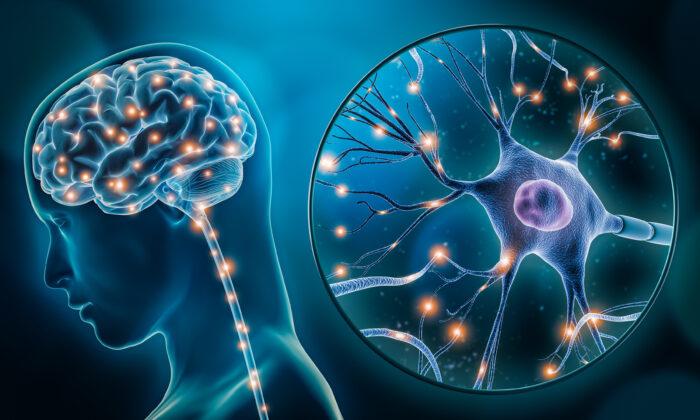A recent study revealed a direct link between the chemical bisphenol-A (BPA) and two of the most prevalent childhood disorders: autism and attention-deficit/hyperactivity disorder (ADHD).
The body’s ability to detoxify BPA—a chemical present in countless everyday plastic items—was reduced in children with these conditions, according to a recent study published in PLOS ONE.
While avoiding BPA entirely is nearly impossible, emerging science suggests that people can maximize their natural detoxification processes in several ways. It may even be as simple as making basic dietary choices and sweating through sauna use.
Ubiquitous BPA Exposure and Health Damage
BPA has been widely used since the 1950s to manufacture plastics and consumer goods. In 1993, scientists discovered that BPA was leaching from polycarbonate flasks and showing estrogenic effects—acting similarly to the female sex hormone estrogen. They also found that BPA was very potent in speeding the growth of breast cancer cells.Further research has revealed BPA’s damaging effects on the neurological, reproductive, cardiovascular, endocrine, and immune systems.
A 2008 study found BPA in nearly 93 percent of the 2,517 participants tested, with higher concentrations in younger participants. A 2020 European research initiative measuring BPA, as well as similar substitutes, in 2,756 adults across 11 countries found that 92 percent had concentrations exceeding a newly updated “tolerable daily intake.”
As recently as September, the PLOS ONE study tested the efficiency of a BPA detoxification process called glucuronidation in children with autism, children with ADHD, and control subjects. An earlier 2015 study linked decreased BPA detoxification to autism. The PLOS ONE study found that detoxification was reduced by 11 percent in the autism group and 17 percent in the ADHD group. The authors concluded that impaired detoxification is a plausible mechanism for both disorders.
Are Alternatives Better?
Despite “BPA-free” labels, replacements such as bisphenol-S (BPS) and bisphenol-B (BPB) may have similarly harmful properties. Emerging research shows that BPS can also disrupt endocrine function and cause chromosomal abnormalities.A review published in 2020 in the journal Environment International revealed a concerning pattern regarding BPS: It can damage the nervous system, create oxidative stress, and increase the risk of developing brain disorders.
Is ‘BPA-Free’ Even Possible?
Environmental and consumer advocates have called for clamping down on BPA proliferation with some success. Restrictions vary by country and jurisdiction. Some have implemented limitations on the use of BPA, particularly in products that come into contact with food and beverages.However, it may be unavoidable, as it’s so prevalent in the manufactured environment. BPA is ubiquitous in almost every aspect of daily life—it’s found in building materials, drinking bottles, food containers, electronics, pipes, flooring, receipts, and clothes. It has also been detected in rivers, drinking water, soil, and air.
Fighting Back Against BPA
BPA’s harmful effects on fetal development are particularly concerning, according to Kara Fitzgerald, a functional medicine physician with a doctorate in naturopathic medicine.She cited studies by Janine LaSalle, a pioneering researcher in the field of epigenetics, and Randy Jirtle, a renowned researcher in the fields of epigenetics and genomic imprinting, showing adequate folate protected against BPA-linked autism, while genistein—a flavonoid found in foods such as soybeans, fava beans, miso, alfalfa, and broccoli—and methyl donor nutrients, which include folic acid, the synthetic form of folate, reversed BPA’s damage. Folate is found in dark green, leafy vegetables and beans, fresh fruits, liver, whole grains, eggs, and fortified foods.
“Clearly, we need to avoid exposure where possible, but we also need to take heart that we do have some tools to counter the negative effects,” Ms. Fitzgerald told The Epoch Times.
Best Foods for Detox
To support BPA detoxification, Ms. Fitzgerald has published a list of foods that can help the process.
Possible Ways to Mitigate BPA
A 2022 review published in Molecules compiled natural remedies for mitigating BPA, including Pistacia integerrima, a traditional medicine native to Asia and commonly known as crab’s claw, which was found to reduce BPA’s cardiotoxicity in rats. Fenugreek, another natural remedy, showed potential to improve testicular damage caused by BPA in mice. And Ginkgo biloba exhibited neuroprotective qualities in response to the potential cognitive deficits from BPA exposure.The antioxidant Coenzyme Q10 (CoQ10) helped to restore female fertility by reducing BPA-linked DNA damage and embryonic defects, a 2020 study published in Genetics showed.
A 2011 study published in the Journal of Environmental and Public Health found higher BPA concentration in sweat than in blood or urine, suggesting that sweating through saunas or exercise may help to eliminate BPA.
Probiotics Bifidobacterium breve and Lactobacillus casei decreased BPA levels and increased excretion in rats, according to a 2008 study published in Bioscience, Biotechnology, and Biochemistry.
How to Limit BPA Exposure
To avoid BPA, Ms. Fitzgerald recommends that we limit canned foods, use glass containers, avoid putting plastic in microwaves, refrain from washing plastic containers in dishwashers, and wash our hands after handling receipts. A 2014 study found that handling receipts for two hours increased BPA levels in urine.The same study suggests that widely used hand sanitizers and skin care products may contain compounds that enhance skin penetration and may amplify the absorption of BPA through the skin by up to 100 times.







